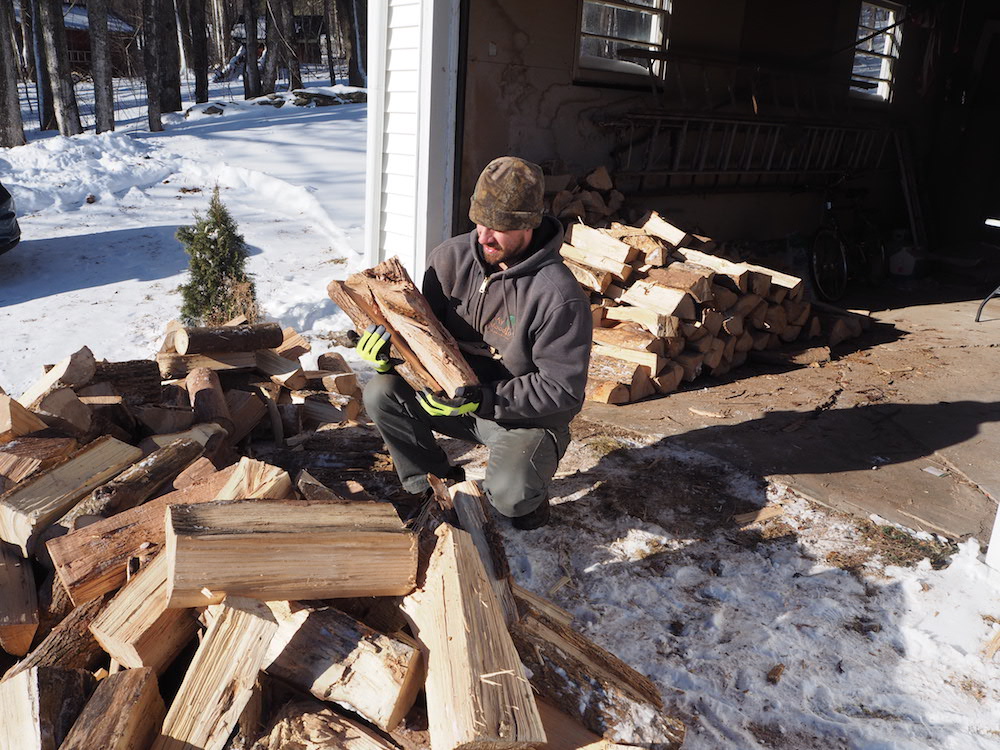My wife Jess and I moved into our Stamford, NY home during the last weekend of January 2021. Temperatures were in the teens and there was knee-deep snow on the ground. That sounds tougher than it was. We were tickled to be homeowners and when we weren’t moving furniture, the oil-fired, water-filled baseboard heating system kept us warm.
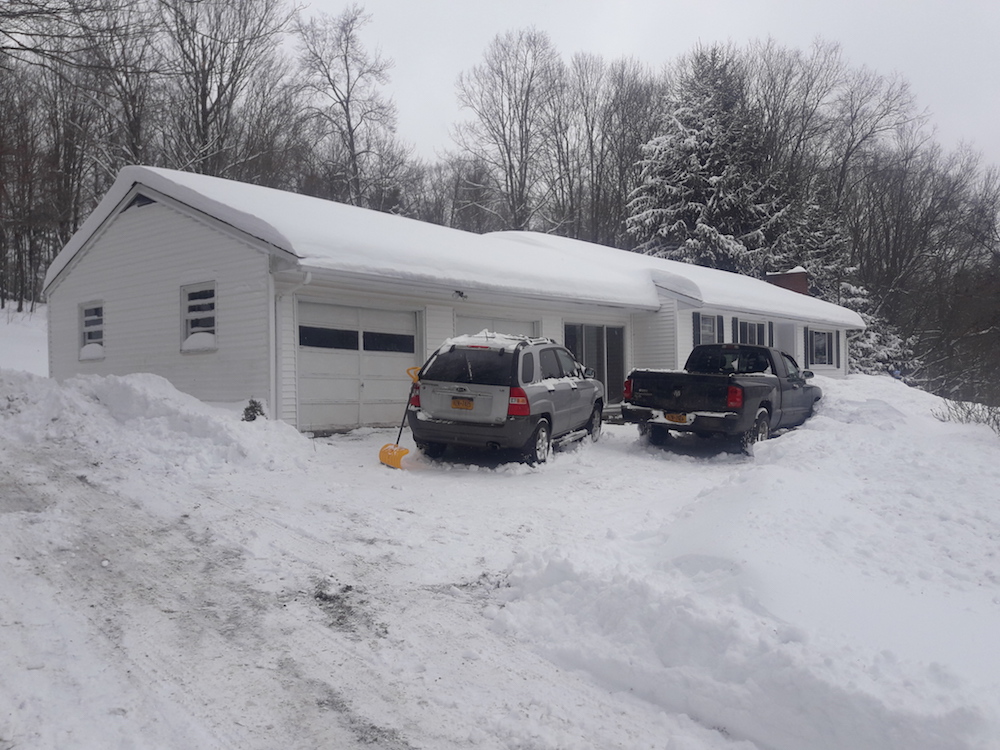
We moved into our first home during a particularly cold and snowy stretch, but it went off without a hitch.
However, during our first 3 months in the house (February through April 2021), our fuel oil bill was roughly $1200. That seemed like a lot of money to us, so we decided to find a cheaper way to heat the house. We already had a fireplace and decided to get a more efficient fireplace insert.
In Dec. 2021, we bought a Blaze King Princess PI29 solid fuel wood catalytic stove for about $5400 (including installation costs and sales tax). The stove had a Higher Heating Value (HHV) of 75%, which was the minimum required for the 2021 federal tax credit on wood and pellet stoves. We got a tax credit equal to 26% of the purchase and installation costs less sales tax, or about $1300. If you are in the market for a new wood stove, pellet stove, or outdoor wood boiler, you can look up their HHVs here to see if they qualify.
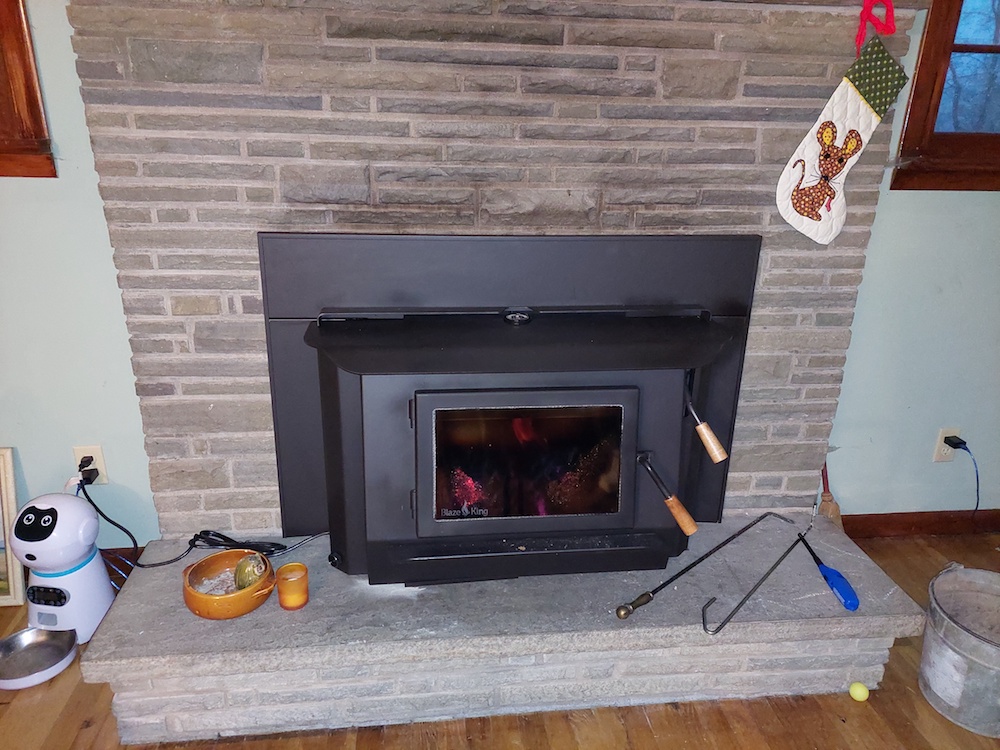
The Blaze King Princess PI29 wood stove.
Our stove was installed on Dec. 11, 2021. We burned our first few fires with Stewart’s Shops gas station firewood, which comes in bags filled with one cubic foot of firewood. For reference, our wood stove’s firebox has a volume of 2.6 cubic feet. We went through a bag or two of Stewart’s wood a day. It was kiln-dried and easy to burn, but at $9 per bag it was not very cost-effective!

Jess and I enjoying our first fire in the new wood stove.
Soon after, we began purchasing truckloads of cut and split firewood delivered to the house. Each load was about a cord (128 cubic feet of neatly stacked split firewood) and cost between $250 and $300. From mid-Dec. 2021 to the end of April 2022, we burned about 2.5 cords.
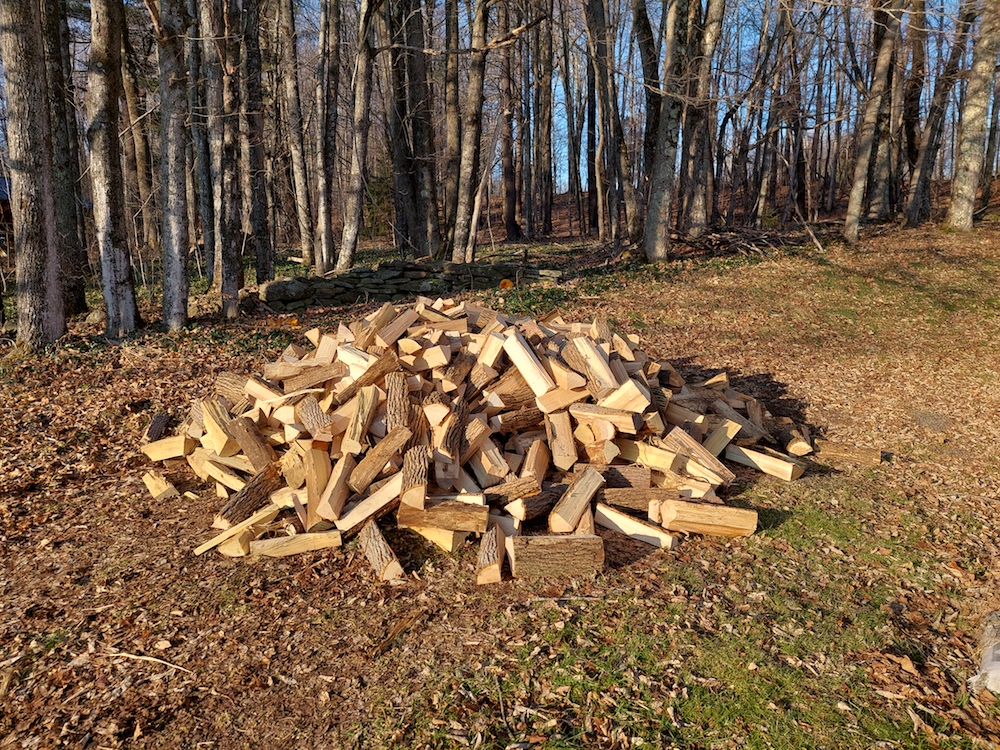
Our first cord of cut and split firewood. This load was mostly ash with some locust.

Our second cord of firewood had chunkier pieces and consisted of ash, oak, and cherry.
During that time, I became a wood-burning fool! I really enjoyed the whole process. Stacking wood, bringing in bundles to dry in front of the stove, starting and tending fires, scooping out the ashes, and starting all over again. Heating with firewood also gave me a sense of connection to the land and the people that work in the forest products industry.
Stacking firewood on a bluebird sky morning in January.
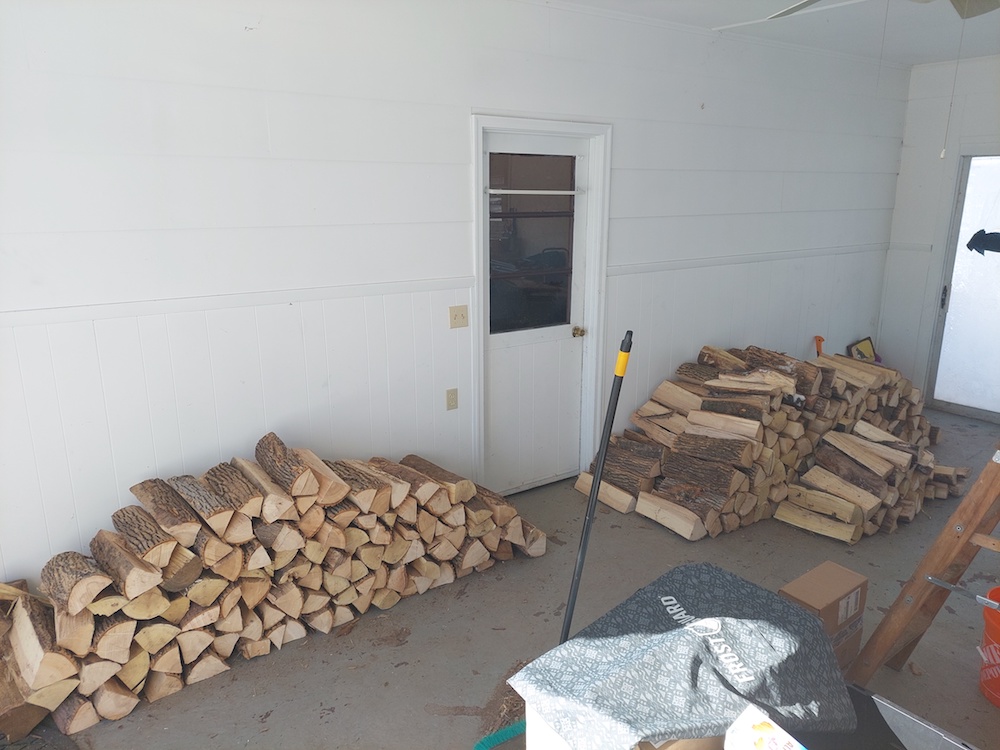
Firewood staged in the breezeway.
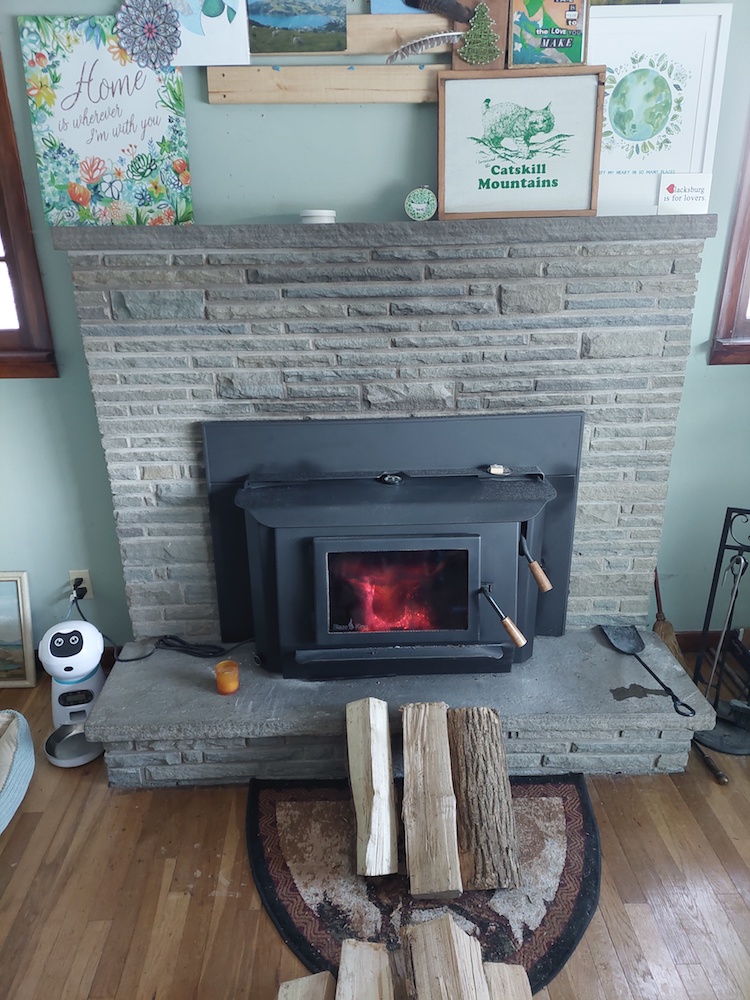
Firewood staged in front of the stove to reduce wood moisture.
I was diligent in keeping the woodstove going, trying not to let the upstairs thermostat dip below 62 degrees F, which would trigger the oil-powered baseboard heat. I was all too aware of the rising fuel costs at the time, which went from $3.30/gal in Dec. 2021 to $4.70/gal in Apr. 2022. Fortunately, the woodstove kept the upstairs of our ranch-style home between 65 and 70 degrees F, even with outdoor temperatures in the single digits.
Stove operation wasn’t difficult, but it took me a few weeks before I was keeping the fire going with ease. The two most important things I learned were to use dry wood and to keep a base of hot coals going for as long as possible. I tried to keep a day’s worth of wood in front of the fireplace at all times to reduce wood moisture and I cleaned out the ashes every other day, making sure to keep enough hot coals to cover the firebox floor.
A direct cost-comparison between oil and firewood heat for our house is complicated because we have an oil-fired water heater. I suppose if I do a good job of keeping the upstairs air temperature above 62 degrees F with the wood stove, I can assume that any oil use is for hot water only.
Although I am eager to compare the cost of firewood versus oil heat, it is still too soon to tell. During our first heating season with the wood stove (mid-Dec. 2021 through Apr. 2022), we invested $5147 in the firewood system (80% for the wood stove, 18% for firewood, and 2% for a maul and chimney sweep supplies). During our first 15 months in our house, we spent $2740 on the oil-fired system (93% for fuel oil, 7% for furnace maintenance). I will know more over time.
I look forward to finding more cost savings by learning to use a chainsaw, buying log length firewood, and maybe even a cutting a few firewood trees from the backyard woods. Some of you may remember from a previous blog that I have some ash trees near the house that need to come down. Lastly, the wood stove user manual came with instructions for building a firewood storage shed. Hopefully, I can get this done and start the next heating season with a few cords of well-seasoned firewood.
Related blogs:
Helpful Links:
